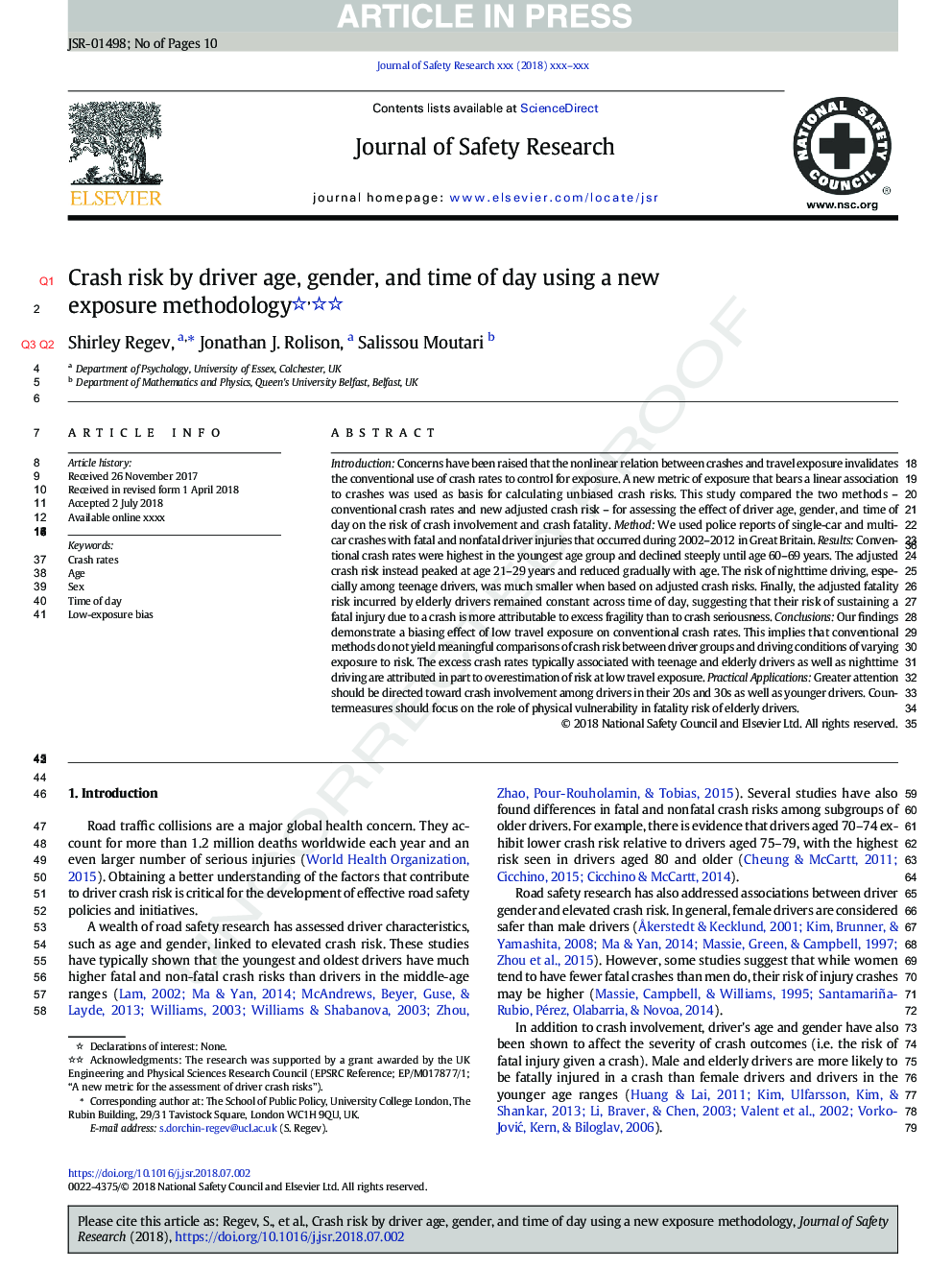| کد مقاله | کد نشریه | سال انتشار | مقاله انگلیسی | نسخه تمام متن |
|---|---|---|---|---|
| 6973587 | 1453294 | 2018 | 10 صفحه PDF | دانلود رایگان |
عنوان انگلیسی مقاله ISI
Crash risk by driver age, gender, and time of day using a new exposure methodology
ترجمه فارسی عنوان
ریسک تصادف با سن، جنس و زمان درایور با استفاده از یک روش جدید قرار گرفتن در معرض
دانلود مقاله + سفارش ترجمه
دانلود مقاله ISI انگلیسی
رایگان برای ایرانیان
کلمات کلیدی
نرخ سقوط، سن، ارتباط جنسی، زمان روز تعصب کم قرار گرفتن در معرض،
موضوعات مرتبط
مهندسی و علوم پایه
مهندسی شیمی
بهداشت و امنیت شیمی
چکیده انگلیسی
Introduction: Concerns have been raised that the nonlinear relation between crashes and travel exposure invalidates the conventional use of crash rates to control for exposure. A new metric of exposure that bears a linear association to crashes was used as basis for calculating unbiased crash risks. This study compared the two methods - conventional crash rates and new adjusted crash risk - for assessing the effect of driver age, gender, and time of day on the risk of crash involvement and crash fatality. Method: We used police reports of single-car and multi-car crashes with fatal and nonfatal driver injuries that occurred during 2002-2012 in Great Britain. Results: Conventional crash rates were highest in the youngest age group and declined steeply until age 60-69â¯years. The adjusted crash risk instead peaked at age 21-29â¯years and reduced gradually with age. The risk of nighttime driving, especially among teenage drivers, was much smaller when based on adjusted crash risks. Finally, the adjusted fatality risk incurred by elderly drivers remained constant across time of day, suggesting that their risk of sustaining a fatal injury due to a crash is more attributable to excess fragility than to crash seriousness. Conclusions: Our findings demonstrate a biasing effect of low travel exposure on conventional crash rates. This implies that conventional methods do not yield meaningful comparisons of crash risk between driver groups and driving conditions of varying exposure to risk. The excess crash rates typically associated with teenage and elderly drivers as well as nighttime driving are attributed in part to overestimation of risk at low travel exposure. Practical Applications: Greater attention should be directed toward crash involvement among drivers in their 20s and 30s as well as younger drivers. Countermeasures should focus on the role of physical vulnerability in fatality risk of elderly drivers.
ناشر
Database: Elsevier - ScienceDirect (ساینس دایرکت)
Journal: Journal of Safety Research - Volume 66, September 2018, Pages 131-140
Journal: Journal of Safety Research - Volume 66, September 2018, Pages 131-140
نویسندگان
Shirley Regev, Jonathan J. Rolison, Salissou Moutari,
